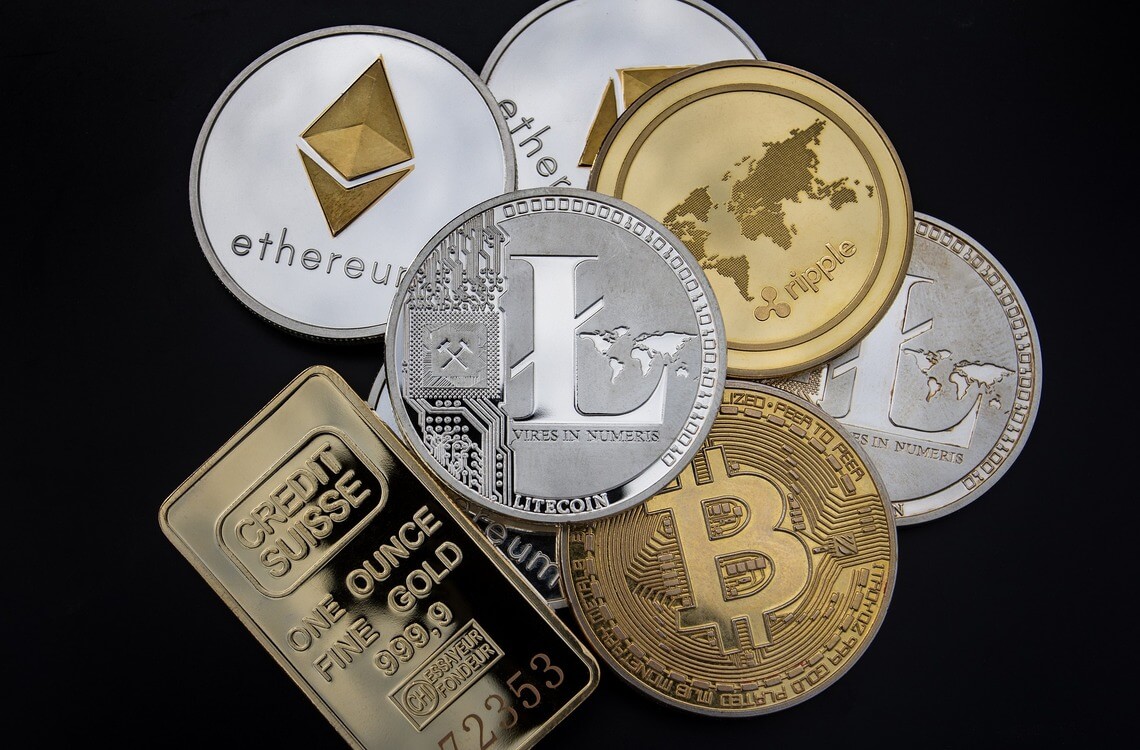A potential future of payments – ubiquitous instant settlement on the blockchain

With the dawn of the internet and the subsequent birth of the smartphone, the business models of some banks and other fiat-based payment service providers have since changed. Furthermore, fintechs offering disruptive payment functions have rapidly gained traction across the globe – penetrating the domains of many goods and services.
An important factor in fintech’s arsenal has long been their ability to create easy-to-use and hyper-personalized onboarding and fulfillment journeys, as well as newer payment form factors for end customers, such as contactless near-field communication payments and “QR scan-and-pay.”
In recent years, the global banking and finance industry has moved decisively, first to conduct experiments and pilots, and now to embrace blockchain technology. This gives rise to some important battlegrounds of opportunity in the payments landscape that both traditional banks and fintech players are fighting over.
Lim Soon Chong, Group Head of Global Transaction Services, DBS.

Fintechs have also proven to be better at making use of alternative processing and blockchain-based clearing infrastructures outside of correspondent banking arrangements. However, one criticism of some innovations outside the regulated sphere is that they may not always have met the strict security and anti-money laundering controls expected by regulators and society.
The next step in the evolution of payments will be an upgrade to existing interbank clearing arrangements in payment networks and infrastructures, underpinned by distributed ledger technology. This should be ubiquitous for both high and low value payments operating globally, and around the clock, while still effectively preventing the illicit use of financial services.
A November 2021 report from Juniper Research suggested that the use of blockchain could reduce cross-border settlement costs by over $10 billion a year by 2030. Additionally, the report noted that fintech-developed blockchain solutions are already delivering payment efficiencies over legacy systems.
Blockchain technology can be the catalyst for innovation in next-generation payment systems for a few important reasons.
First, data immutability and transparency are fundamental characteristics of the blockchain, which are enforced through its cryptographically enhanced, tamper-proof, and append-only decentralized ledger structure. By providing a single immutable shared source of truth for payer and payee, blockchain minimizes inefficiency, fraud or manipulation of financial audit trails, thereby ensuring a secure and robust transaction processing infrastructure.
Second, blockchain is designed to be decentralized, riding on top of distributed ledger infrastructure and consensus mechanism to support continuous operation, resulting in the flexibility of network arrangements with or without a central authority or intermediaries. This means that blockchain systems implemented at a larger scale will inherently have high fault tolerance and redundancy.
For payments, a wholesale blockchain network designed to also clear high-value transactions can keep track of all settlements, with near-real-time synchronization of ledger records for each financial institution. This ensures higher – or even 24/7 – availability of the payment infrastructure to end customers.
Finally, blockchain-based systems primarily use “smart contracts” which are self-executing contracts that automate previously labor-intensive manual operations.
Smart contracts dramatically increase the efficiency of financial transactions, allowing automatic, state-based value movement within the blockchain as well as atomic settlements. Inefficiencies (such as manual repair and inconsistencies in processing windows across multiple parties) are minimized or eliminated.
As a result, blockchain-enabled solutions result in the ability and capacity to process both high-value and low-value payment transactions and complete settlement much faster (T+0) and at a lower cost than today, where settlement can be T+ 2, or longer. Since there is almost no reliance on manual processing, these solutions can also work through weekends and major holidays.
Both blockchain technology and links of market infrastructures for instant real-time settlement provide the basis for instant clearing, both in domestic and cross-border payment contexts. The practical way to incrementally improve payment settlement and settlement, especially for cross-border payments where there are tens of thousands of existing corridors, will be to use a combination of bilateral real-time links with application programming interfaces (APIs). linkages of market infrastructures and blockchain-enabled networks.
Meanwhile, links of real-time settlement infrastructures for low-value transactions are likely to proliferate in parallel with the growth of blockchain-enabled payment and clearing networks, as the latter require greater convergence in technology requirements and standards. Ultimately, between the two, blockchain-based clearing networks are a more flexible and scalable option for processing a variety of high-value wholesale and low-value retail payments.
More new use cases
In recent years, the global banking and finance industry has moved decisively, first to conduct experiments and pilots, and now to embrace blockchain technology. This gives rise to some important battlegrounds of opportunity in the payments landscape that both traditional banks and fintech players are fighting over.
An immediate battleground is the growing demand for secure, cost-effective, 24×7 real-time cross-border payments. This demand is directly related to the expansion of e-commerce and money transfers, and the need for contactless payments in public transport and merchant gatherings from tourists (with behavior that has changed significantly due to the global pandemic).
In addition to payments, the financial industry is actively developing blockchain-based solutions in other areas. The technology is being tested across asset classes and across domains, from equity and debt capital markets, to rights in collective investment companies, currency and derivatives trading, as well as in trade and supply chain finance.
There are several areas where these solutions have an impact, and could be potentially transformative in the coming decade:
-
On-demand, cross-border payments in real time – Blockchain-based payment networks offer near-instant payment and settlement opportunities across national borders around the clock. Juniper Research estimates that global e-commerce payment transactions will exceed $7.5 trillion by 2026, up from $4.9 trillion in 2021.
-
Tokenized Financial Assets – Tokenization is the process by which an underlying financial asset (tangible or dematerialized) is converted into a digital token that acts as its proxy.
-
Cryptocurrency to fiat currency conversion – Crypto exchanges reported more than $14 trillion in trading volume last year, according to The Block Research.
-
Stablecoins & Central Bank Digital Currency (CBDC) – The two most popular stablecoins (Tether and USD Coin, both pegged to the US dollar) recently passed $50 billion and $25 billion in market capitalization, respectively. Another significant development has been CBDCs – digital payment instruments issued by a country’s central bank, similar to physical fiat currency, but in digital form recorded on a blockchain.
-
GameFi and Metaverse NFTs – GameFi combines the terms “gaming” and “financial” and refers to games to earn blockchain games. A virtual gaming environment is enabled and orchestrated using digital currencies (often cryptocurrencies) and non-fungible tokens (NFTs). Additionally, Gartner estimates that by 2026, 25% of people will spend at least one hour a day in the metaverse for work, shopping, education, socializing, or entertainment.
The need to innovate, connect and collaborate
Global payment networks have always been characterized by a certain degree of fragmentation and diversity. Payment service providers or financial institutions assemble their propositions through a combination of building, partner and outsourcing models to gain access to clearing systems and for cost efficiency.
It is important for financial institutions to invest in updating their payment infrastructure beyond traditional fiat-based schemes and systems to maintain market relevance, capture flows from new business models and enable other services. An immediately sensible move would be to partner with like-minded financial institutions to connect to blockchain-enabled payment systems that offer near-instant cross-border payment capabilities.
Collaboration is the key to driving innovation. One such example is the blockchain-based clearing and settlement platform developed by Partior – a joint venture between DBS, JP Morgan and Temasek – which aims to revolutionize cross-border wholesale payments.
DBS believes that interoperability across multiple technology platforms and networks is critical to increasing the relevance of the financial industry for both high-value and low-value payment contexts. This will in turn promote the efficiency and availability of settlement and settlement. We thus continue to leverage blockchain technology even as we increase our links to instant settlement infrastructures.
At DBS, we believe we are big enough to have the capacity to invest in payment infrastructure and new technologies, and small enough to be nimble and efficient
Our approach is based on the belief that in the future, blockchain will underpin the core of future payment networks, complementing point-to-point connectivity and user-friendly applications for end users.
In accordance with this approach, we tailor our solutions to allow other banks, financial institutions and large corporations to connect to blockchain platforms with great ease. We do this by using existing connectivity arrangements, bypassing the need for our partners to invest in personnel and technology right away, while enabling participation in blockchain-enabled clearing networks of other financial institutions.
At DBS, we like to believe that we are big enough to have the capacity to invest in payment infrastructure and newer technologies, and small enough to be nimble and efficient. We welcome engagement from the financial community to discover the full range of opportunities available as we move forward together towards the future of blockchain-enabled financial services.

























